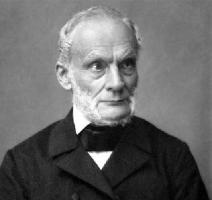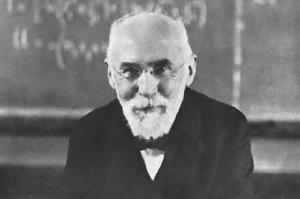Santiago Ramón y Cajal: biography of this pioneer of neuroscience
Santiago Ramón y Cajal (1852-1934) is recognized as one of the founders of contemporary neuroscience. This is because the work he carried out in histology and anatomy has been fundamental in describing the functioning of our neural networks. In addition, his biography is full of stories related not only to science, but to art and even military activity.
In this article we will a review of the biography of Santiago Ramón y Cajal, passing through some of the most representative elements of the life and work of one of the most important scientists of the 20th century.
- Related article: "Ramón y Cajal explained how the brain works with these drawings"
Brief biography of Santiago Ramón y Cajal: who was he?
Santiago Ramón y Cajal was born on May 1, 1852 in Petilla de Aragón, in northern Spain. He was the son of a surgeon who later trained as a physicist.
Although he would become one of the most important scientists in history, Ramón y Cajal's concerns during his adolescence and youth were very focused on art and physical activity, and not so much on homework schoolchildren. However, and despite the fact that there does not seem to be a relationship, these artistic concerns were fundamental skills for the training and scientific development of Ramón y Cajal later.
At the young age of 16, together with his father, he carried out different studies in anatomy based on drawings that Ramón y Cajal himself made. This was one of his earliest approaches to anatomy and artBesides, it was one of the antecedents of his interest in the practice of dissecting.
In the year 1873, Ramón y Cajal graduated from the Zaragoza School of Medicine. There he had followed the teachings of the German Theodor Schwann, a researcher specializing in the studies of the cell as the basic structural unit of every living organism.
Subsequently, and in the political context of the conflict in Spain, Ramón y Cajal occupies the position of military doctor within the services of the Spanish army. As part of this he himself spent a few months in Cuba, and it was until his return to Zaragoza that he continued his studies in histology and anatomy.
In 1879 when he became an associate professor at the University of Zaragoza, where there was also a physiology laboratory that allowed him to get closer to studies done through the microscope. In the same year, he started a family with Silveria Frañañás, with whom he had seven children.
In 1881 he became a professor at the University of Valencia, and later at the universities of Barcelona and Madrid. In this last city he founded the biological research laboratory, in 1922, now known as Instituto Cajal, one of the most important neurobiology research centers in the world.
- You may be interested: "History of Psychology: main authors and theories"
The foundations of contemporary neuroscience
Santiago Ramón y Cajal, together with the Italian anatomist Camillo Golgi, was the first histologist to suggest that neurons are the primary structures and functional units of the nervous system, and that they are, moreover, structures that are directly connected to each other, but that are relatively autonomous.
In other words, thanks to his research it was possible to know that neurons are cells that communicate with each other through different elements that are distributed in cell spaces (such as axons). This laid the foundation for the development of neuroscience as we know it today.
In order to analyze the individual structure of neurons, Ramón y Cajal used a test called the "silver staining method", which Camillo Golgi had developed. Through this test, both researchers found that the nervous system functions as a kind of mesh or network.
This made an important contribution, since it was previously thought that the nervous system was composed of separate cells, communicating by continuity (the Golgi himself thought this latest).
The development of their research and the perseverance of Ramón y Cajal in perfecting the staining method, allowed them to obtain sharp images of nerve endings and suggest that neurons communicate by contiguity, through the branches of dendrites and axons that connect neuronal bodies.
- Related article: "Types of neurons: characteristics and functions"
The legacy of this Spanish researcher
The use of the silver chromate staining method began with the study of the brains of embryos of birds and small mammals. Especially with the brain of the embryos it allowed them to obtain clear colorations of the gray matter of the brain, which later was transferred to the study of human neuronal activity.
For all the above, in 1906 both researchers obtained the Nobel Prize in Physiology. Likewise, all of his work was compiled in a book that has become one of the classics of neuroscience: The nervous system of man and vertebrates.
Finally, although Ramón y Cajal did not study neuropathology directly, much of the knowledge and investigations that he developed have been used to understand the functions and alterations of the systems neuronal.
Bibliographic references:
- González, M. (2006). Santiago Ramón y Cajal, one hundred years after the Nobel Prize. Sciences, 84: 68-75.
- New World Encyclopedia. (2015). Santiago Ramón y Cajal. Retrieved June 13, 2018. Available in http://www.newworldencyclopedia.org/entry/Santiago_Ramón_y_Cajal.


